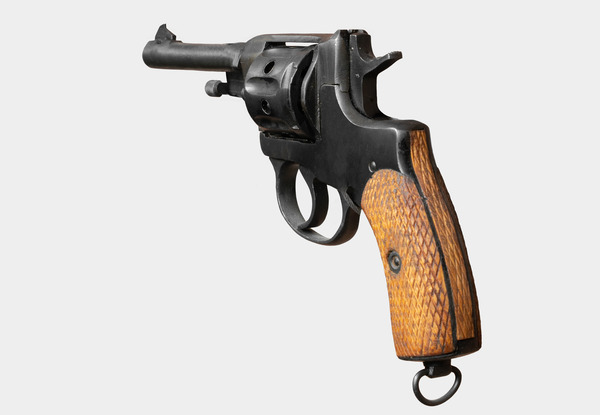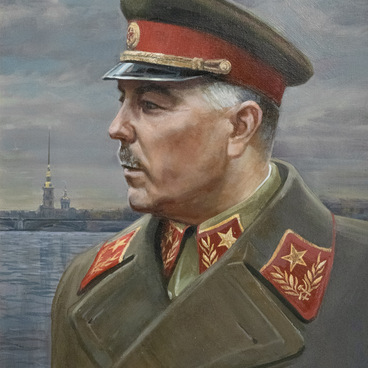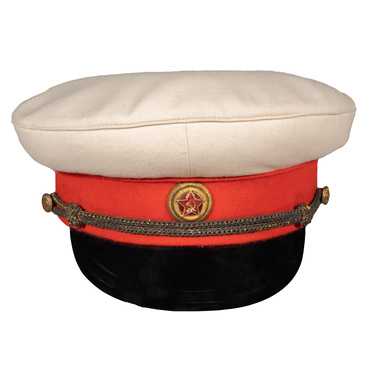The Nagant revolver holds a special position in the exhibition of the Victory Museum. This is a unique weapon, the symbol of the revolution and the Russian Civil War. In the Russian language, the name “Nagant” itself became a generic word used to describe any revolver, and even a self-loading pistol.
The revolver was designed by two brothers — Emile and Léon Nagant. They had a small family workshop in the Belgian city of Liège, one of the centers of the European firearms industry. The first revolver was developed by the weapons designer Émile Nagant. He presented it to the Belgian administration that approved the revolver but suggested certain modifications. The firearm needed to be lighter and had to be adopted to the most commonly used cartridge. Later, Émile Nagant fell ill and suffered progressive blindness. The work was continued by his younger brother Léon who was also a talented inventor.
In 1892, Leon Nagant simplified the revolver’s design. The new firearm used a special cartridge with a case. The improved design prevented the escape of propellant gases. In this version, the cylinder moved forward when the gun was cocked. This revolver became a standard model and won the contest. In 1895, the project was approved.
The Nagant revolver was actively produced in the Russian Empire where it became extremely popular among the military servicemen, The production of these revolvers continued even after the Russian Civil War when the Tula Arsenal manufactured over 170 thousand units.
In 1930, the main competitor of the Nagant revolver, the TT pistol, was adopted into service. However, the revolvers were still produced. They were low-maintenance and easy to repair. A misfire did not cause any delay, and the next shot could be fired immediately. These advantages made the Nagant revolver stand out against other weapons.
In further Nagant revolver versions, the sighting notch and the foresight shape were modified. The manufacturing of this revolver continued until the end of the Great Patriotic War.
The revolver was designed by two brothers — Emile and Léon Nagant. They had a small family workshop in the Belgian city of Liège, one of the centers of the European firearms industry. The first revolver was developed by the weapons designer Émile Nagant. He presented it to the Belgian administration that approved the revolver but suggested certain modifications. The firearm needed to be lighter and had to be adopted to the most commonly used cartridge. Later, Émile Nagant fell ill and suffered progressive blindness. The work was continued by his younger brother Léon who was also a talented inventor.
In 1892, Leon Nagant simplified the revolver’s design. The new firearm used a special cartridge with a case. The improved design prevented the escape of propellant gases. In this version, the cylinder moved forward when the gun was cocked. This revolver became a standard model and won the contest. In 1895, the project was approved.
The Nagant revolver was actively produced in the Russian Empire where it became extremely popular among the military servicemen, The production of these revolvers continued even after the Russian Civil War when the Tula Arsenal manufactured over 170 thousand units.
In 1930, the main competitor of the Nagant revolver, the TT pistol, was adopted into service. However, the revolvers were still produced. They were low-maintenance and easy to repair. A misfire did not cause any delay, and the next shot could be fired immediately. These advantages made the Nagant revolver stand out against other weapons.
In further Nagant revolver versions, the sighting notch and the foresight shape were modified. The manufacturing of this revolver continued until the end of the Great Patriotic War.






